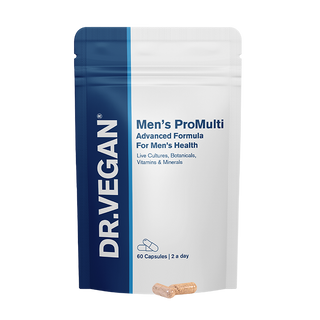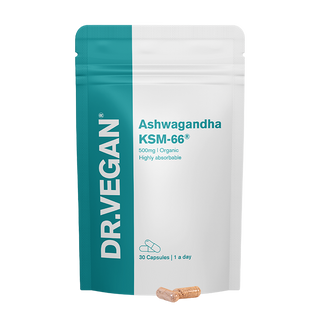What is gynaecomastia in men?

Gynaecomastia is the growth of breast tissue in men - often referred to as 'moobs' - typically due to hormonal imbalances, particularly involving oestrogen and testosterone. Unlike fat accumulation from weight gain, gynaecomastia involves glandular tissue growth and can feel firmer. Gynaecomastia is not life-threatening but can cause discomfort or self-consciousness. It is always best to speak to your doctor, as it may be caused by an underlying health condition. Read more about the four main men's health concerns.
What causes gynaecomastia, and is it a serious problem?
There can be a number of causes of gynaecomastia which may also be working in combination with each other, including:
1) Hormone imbalance: A high level of oestrogen and a low level of testosterone can cause breast growth in men. This imbalance may occur in teenagers and older men.
2) Medications: Certain drugs, like some antidepressants, anti-anxiety medications, steroids, and prostate treatments, can contribute towards breast growth.
3) Substance abuse: Including alcohol, marijuana, and anabolic steroids.
4) Health conditions: Liver or kidney disease, thyroid imbalances, and obesity can increase oestrogen or lower testosterone.
How to tell if you have gynaecomastia
There are a few tell tale signs of developing gynaecomastia:
- Swollen or firm breast tissue, typically symmetrical.
- Tenderness or sensitivity in the breast area.
- A firm, disc-like lump beneath the nipple (different from fatty tissue, which is softer and distributed evenly).
A doctor can confirm gynaecomastia through physical exams or imaging.
How good is what you're putting into your diet? Create your free Diet Profile now to find out.
Do men have oestrogen?
Yes, men naturally produce oestrogen, but at a much lower level than women. Oestrogen is needed for bone health, mood regulation, and sexual function. High levels of oestrogen in men can contribute to gynaecomastia.
Are there stages to developing gynaecomastia?
There are several stages of gynaecomastia.
- Stage 1: Minimal enlargement, often with a small lump under the nipple.
- Stage 2: Moderate enlargement without excess skin.
- Stage 3: More significant breast enlargement with excess skin.
- Stage 4: Severe breast enlargement with excess skin and sagging, resembling female breast tissue.
 Is gynaecomastia related to a specific age group of men?
Is gynaecomastia related to a specific age group of men?
Gynaecomastia can occur in:
- Newborns: Due to maternal oestrogen.
- Adolescents: Hormonal changes during puberty can cause temporary gynaecomastia.
- Older men: Reduced testosterone and increased body fat with age can lead to gynaecomastia.
How to get rid of gynaecomastia
'Moobs' can be stubbornly difficult to get rid of, however they can be addressed over time through diet, lifestyle and certain nutrients:
Self Resolution: Gynaecomastia caused by puberty often resolves itself within 6-24 months as the hormones normalise.
Diet: Reducing body fat through a balanced diet can help decrease oestrogen levels.
Exercise: Strength training and cardiovascular activity can reduce fat, which may decrease symptoms.
Avoid triggers: In particular, try to avoid alcohol and marijuana.
Zinc: Zinc is needed for normal hormonal balance. Ensure that you are consuming enough zinc-rich foods, and take a supplement if necessary. You may also enjoy reading 'what does zinc do to your skin?'.
Vitamin D: Vitamin D is also needed for hormone balance. Ask your doctor for a vitamin D test and take a supplement if you need to. Read more in 'how do I know if I'm deficient in Vitamin D?'. DR.VEGAN'S award-winning Vitamin D3 is highly absorbable and more effective than standard supplements, providing you with essential support for healthy bones, teeth and immunity every day.
Men's ProMulti

Ashwagandha: Ashwagandha may help to balance hormones. It reduces cortisol levels which can interfere with testosterone production. You might be interested in reading '8 surprising benefits of ashwagandha'. DR.VEGAN's Ashwagandha KSM-66® (500mg) is 100% organic and the most scientifically studied form of this herb, acclaimed for supporting mental wellbeing, emotional balance, calm, stamina and endurance.
Fenugreek: Fenugreek may increase testosterone levels and reduce symptoms of oestrogen dominance.
Medicines: Check in with your doctor about any medications you’re on. If gynaecomastia has occurred due to medication, your doctor can help you find an alternative.
Surgery: If the issue doesn’t go away, surgery could be an option to think about.


















